Most SaaS businesses won’t benefit from a traditional SEO audit.
Here’s why:
What’s usually covered in a traditional audit doesn’t account for the real organic growth levers that have an impact on demos, signups, and revenue.
Increasing right-fit traffic and driving significant increases in demos and signups is not as easy as changing a title tag or editing a meta description.
With that in mind – what should you be auditing and improving when it comes to organic customer acquisition to have an actual measurable impact on the metrics that matter the most?
Our Growth Audit looks to focus on the five collar growth levels SaaS businesses can pull when it comes to driving customer acquisition through SEO.
Let’s take a deeper dive into each of those levers.
An SEO audit as a comprehensive examination of a website’s current performance in search engines, identifying any problems that may hinder its ability to rank well.
Regular audits are essential because they enable a proactive approach to finding and eliminating any type of negative ranking factors that can hurt search rankings and organic revenue.
A proper SEO audit will take a deep dive into the following three core aspects of SEO:
A thorough, regular SEO audit will help improve your site’s position on search engine results pages (SERPs), boost domain authority, and enhance the overall user experience by adhering to core web vitals.
For the vast majority of SaaS businesses, the true core movers will be:
Here are the core five areas we focus on to drive real business impact when it comes to auditing:
If you want to build a website that captures demand from organic, and also relies on content assets that generate demand, you need to follow some best practices to build a structure that is going to get you where you want to go.

From the right-fit traffic and user side, this includes:
Website navigation and architecture are often one of the most-missed opportunities for SaaS businesses.
A website’s architecture also plays a crucial role from the search side in:
This issue with auditing tools when it comes to website navigation is that it can hit on some of the basic elements, such as making internal linking suggestions, but it can’t make real navigation or architecture-related decisions as there’s a human element required to think this through, and properly plan based on your specific case.
Further Reading: SaaS Website Architecture Framework
Traditional SEO audits (and tools) typically look at factors such as:
Where the navigation and architecture structure is almost completely missed – yet this is one of the most crucial components to providing a great user experience, improving existing traffic and conversion rates, as well as to boost right-fit traffic through Google and other search engines.
When it comes to ranking pages in Google, this is one of the deadliest mistakes I see content teams make over and over again that brings most of their efforts to a screeching halt:
Missing the search intent for a given keyword.
Search intent is the purpose behind a user’s search term that they type in Google:

As marketers, it’s our job to understand:
Remember – Google’s primary goal is to provide a great user experience, and one facet of that is providing relevant results based on a given query.
Understanding search intent, and choosing the correct primary keyword is crucial for a page’s ability to rank high in the search results.
If you don’t understand search intent and ensure you’re meeting it with the content you’re building – you’ll never be able to rank in Google.
Here’s a good example of matching search intent to a query in an easy example:
“employee engagement strategies”
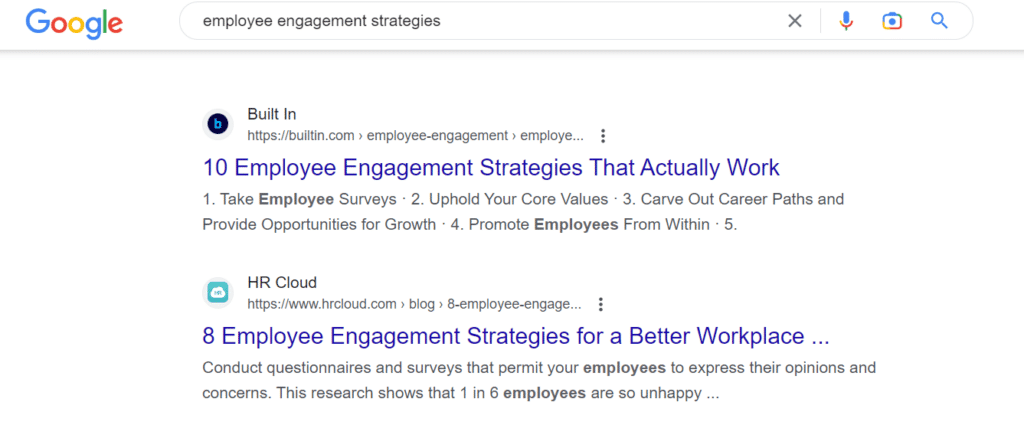
We know based on the search results that we need to build a listicle here to cover this topic and to rank.
If we build anything else, it’s highly unlikely (in most cases) that we will be able to target this query and to rank for it.
Now, there’s a deeper side to this when there’s a mismatch in what Google is showing vs. the query itself (read: opportunity!), but for simplistic purposes, this is the general idea.
An example of a SERP mismatch is for the term “project time tracker” where we can see a mix of:
One of the core pillars of our Growth Audit, as well as one of our general core deliverables when working with clients, is finding existing pages and content that are not ranking and figuring out of the reason is due to a search intent mismatch.
A lot of content teams have put the effort in to build content, but they haven’t built content that is optimized to actually rank – which is a low-hanging fruit win by simply re-structuring the content, meeting intent and ensuring that we’re building content that will rank for a given topic.
For the majority of SaaS businesses, content is going to be the primary driver of your organic customer acquisition.
You need pages and content in order to capture search demand, and to convert and/or properly retarget your audience.
Your content strategy is more than plugging gaps by running a keyword gap analysis vs. your competitors or doing keyword research explicitly using popular SEO tools – and in fact, this is probably one of the worst ways to approach it.
Further Reading: SaaS Content Strategy Breakdown
Content creation should be primarily driven based on data you have internally, including:
The question from the audit perspective when looking at your content is as follows:
Have our previous content efforts resulted in a direct impact on revenue, or not? And if not, why is that the case?
Many businesses get way too deep into tools, and building content based on third-party data – rather than building revenue-driven content that actually is focused-in on their problem-aware audience – hence, leaving teams often exhausted and wondering why they’ve put so much work into content – but nothing to show to it other than some organic traffic numbers – rather than real hard demos, signups and revenue.
Homepage design is crucial, not only for conversion reasons and that it’s generally one of the first touches you have with new website visitors, but also because it serves a core role from the SEO side.
Best practice for designing your product, and how you lay out the homepage itself is going to vary a bit depending on your product, as well as the ACV range you’re in – but in most cases why the homepage is so important is that it’s the most powerful page of your domain.
You’re in full control of the user flow, and also where you’re pushing internal links.
Further Reading: Homepage Design
If you’ve ever seen a traditional SEO audit, or used a popular auditing tool – has it ever referenced anything of importance about the home page?
Likely not – whereas this is one of your core growth levers for acquiring customers – it’s where the whole initial journey begins.
Building backlinks to your important pages and content is crucial for most businesses that lack links and authority.
Without backlinks (and in many cases, ongoing link acquisition) you’re going to have a very difficult time ranking for mid-to-high intent terms in Google.
Traditional SEO audits look at your existing link profile and typically talk about what is considered bad links and how to disavow, aka get rid of them.
While that has some importance – what’s even more important is that you’re building quality links in a scalable fashion.
Further Reading: Link building for SaaS
At Rock The Rankings, we’re always looking at how we can create natural links through pages and content that are simply a great resource from both the content and design side – making them more likely to get linked to.
A proper audit should consider the following:
Again, being proactive about bad or toxic links is great – but most of the time, building net new quality links is much more important and where your focus should be to drive customer acquisition via organic.
Struggling to grow organic demos signups? Rock The Rankings is a top-ranked SaaS SEO Agency that helps SaaS businesses make organic their customer acquisition engine. We’ll create a free marketing plan for your business, and walk you through step-by-step exactly what needs to be done to grow faster.
When performing a SaaS SEO audit, there are numerous tools available – but only a few truly make sense to conduct a proper audit.
We use the following three tools to conduct our audits, as well as a lot of brain power and manual thinking (the tools can’t do that part for you.)
Google Search Console (GSC) is a free tool offered by Google that helps you monitor, maintain, and troubleshoot your site’s presence in Google Search results.
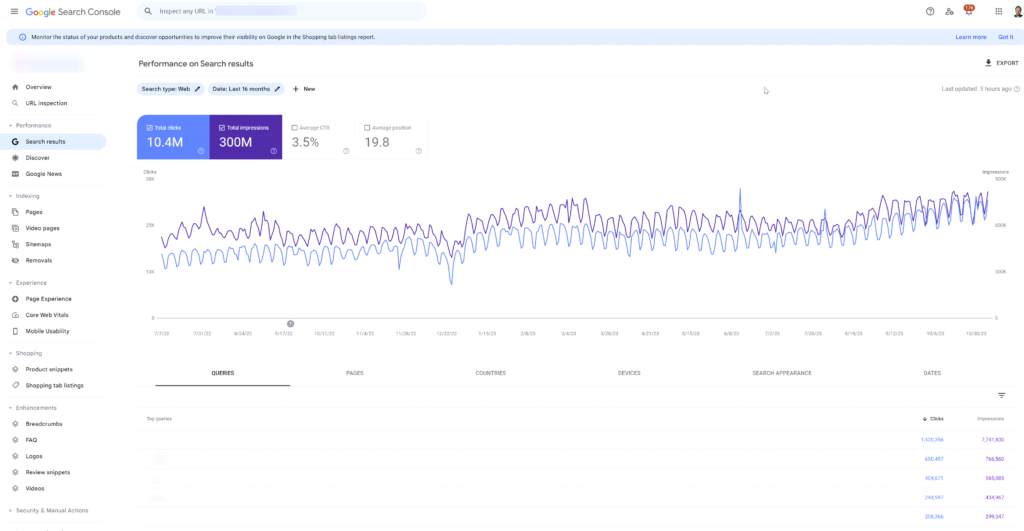
If you’re not leveraging Search Console for SEO insights already, believe me, you’re missing out big time.
GSC valuable insights into how Google views your site and helps you understand your site’s performance in search results, including:
We leverage GSC for taking a deep dive into the optimization of existing content and pages, as it’s a goldmine for keyword data.
Ahrefs is a comprehensive SEO tool that provides a suite of resources to help you with keyword research, competitor analysis, backlink tracking, content research, rank tracking, and site audits.
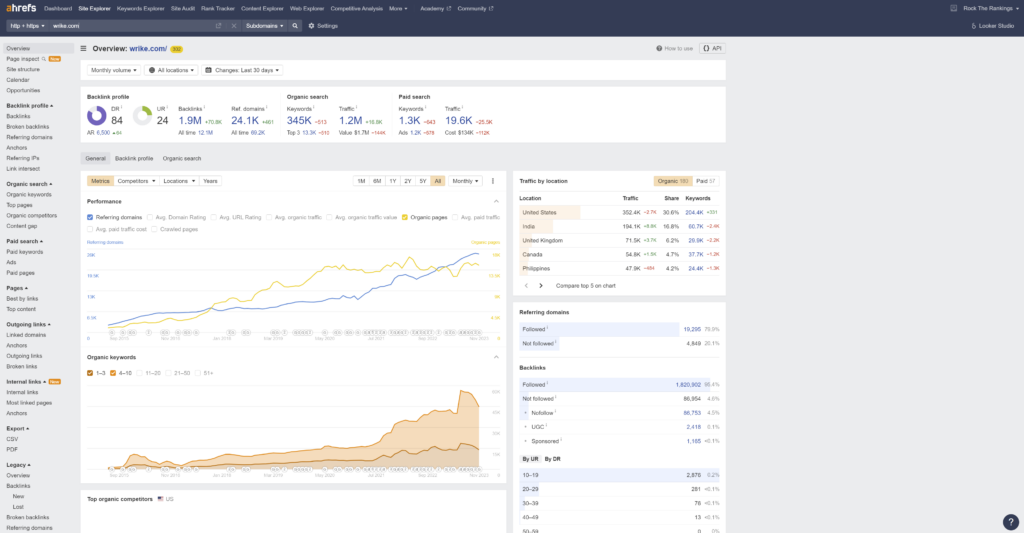
For a SaaS marketer, Ahrefs is invaluable because it not only allows you to analyze your own website’s SEO performance but also helps you to dissect the strategies of competitors, find content gaps you can exploit, track your rankings for specific keywords, and identify high-quality backlink opportunities to enhance domain authority.
Sitebulb is an award-winning SEO auditing tool that provides detailed analysis and insights into your website’s technical performance.
It stands out for its user-friendly interface and the way it presents SEO data visually, making it easier for marketers to understand and diagnose complex SEO issues.
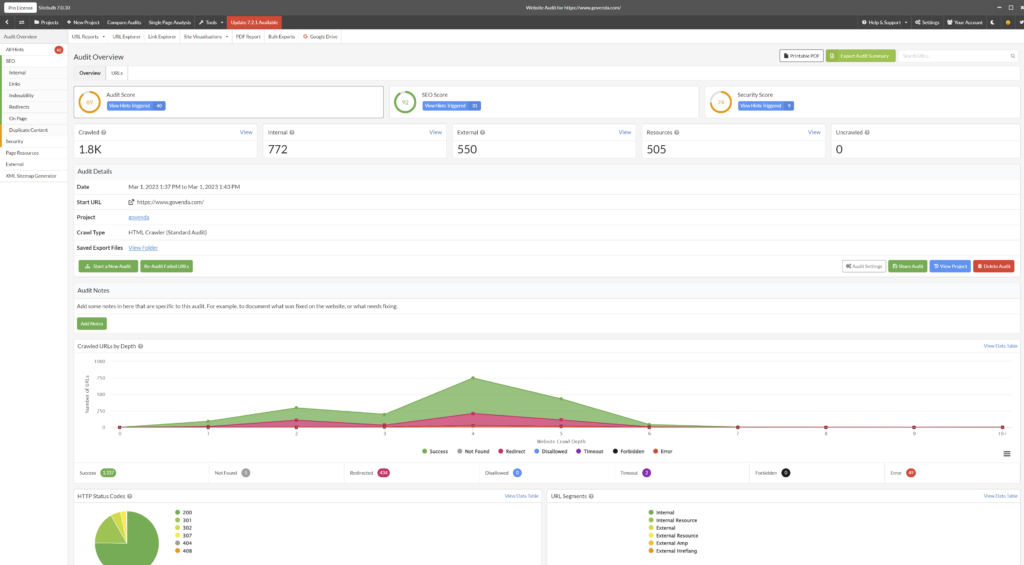
Sitebulb is crucial because it helps you ensure that your website’s technical foundation is solid by uncovering issues that might impede search engine crawling and indexing, such as broken links, duplicate content, and poor site structure.
SiteBulb allows us to pull back a proper website crawl to crunch and run a manual page-by-page analysis, assigning page actions to every page at both the on-page as well as technical level.
Optimizing content for a SaaS website not only enhances its search engine rankings but also aligns the content with the buyer’s journey, which is crucial for boosting conversions.
Focusing on content quality strengthens the site’s SEO performance.
Remember – the two core movers when it comes to search rankings are going to be content (topical relevance) and backlinks.
Building content for the buyer’s journey will support boosting topical relevance, and ensuring you have content for every stage of that journey.
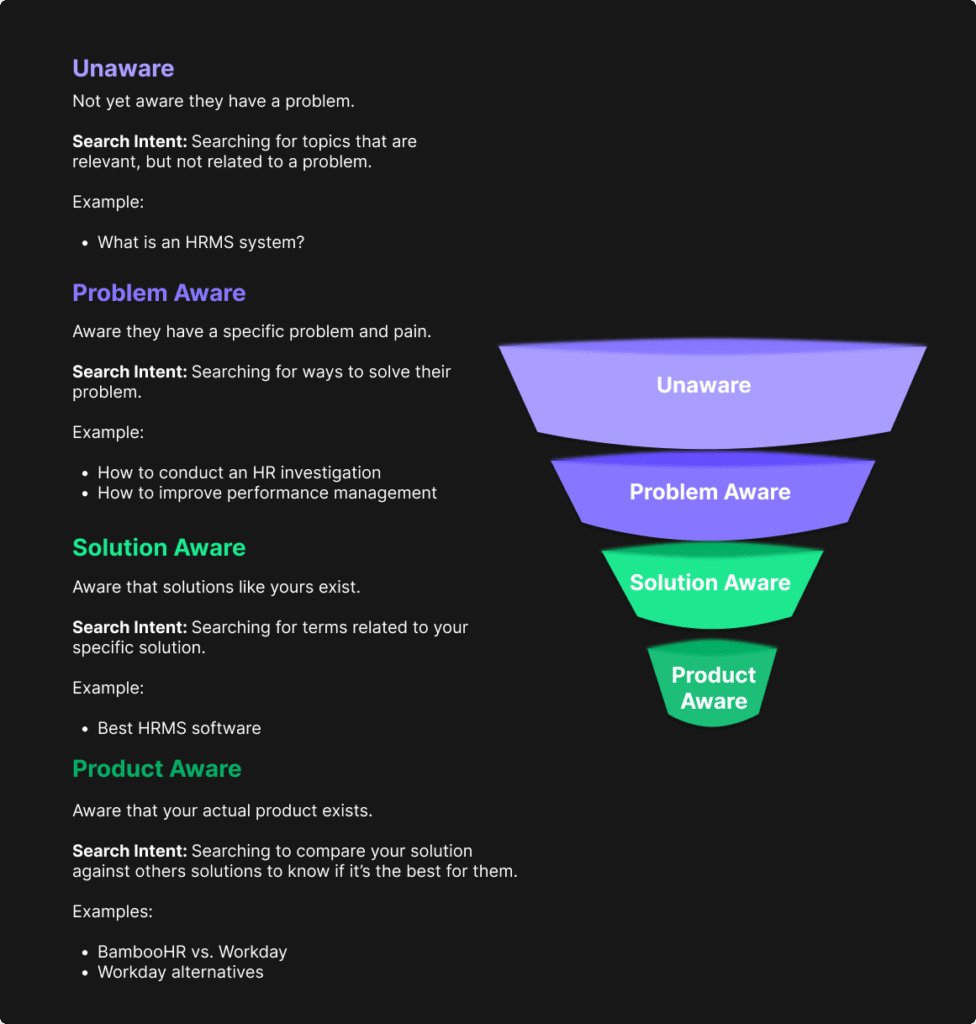
Addressing the buyer’s journey involves:
Optimization of content throughout the buyer’s journey ensures that your website caters to potential customer’s specific needs at each stage, increasing the likelihood of attracting and converting them into loyal users.
Further Reading: SaaS Content Strategy
Traditional SEO audits just don’t work for small and mid-sized businesses in the B2B SaaS and tech space.
Avoid wasting time, resources, and budget – and stick with what actually will drive impact.
We’ve created the Growth Audit for that exact reason:
Want to learn more about our Growth Audit and how it can help your business to drive customer acquisition and revenue growth? Book a time below, and connect one-on-one with our founder to see if it could be a fit.
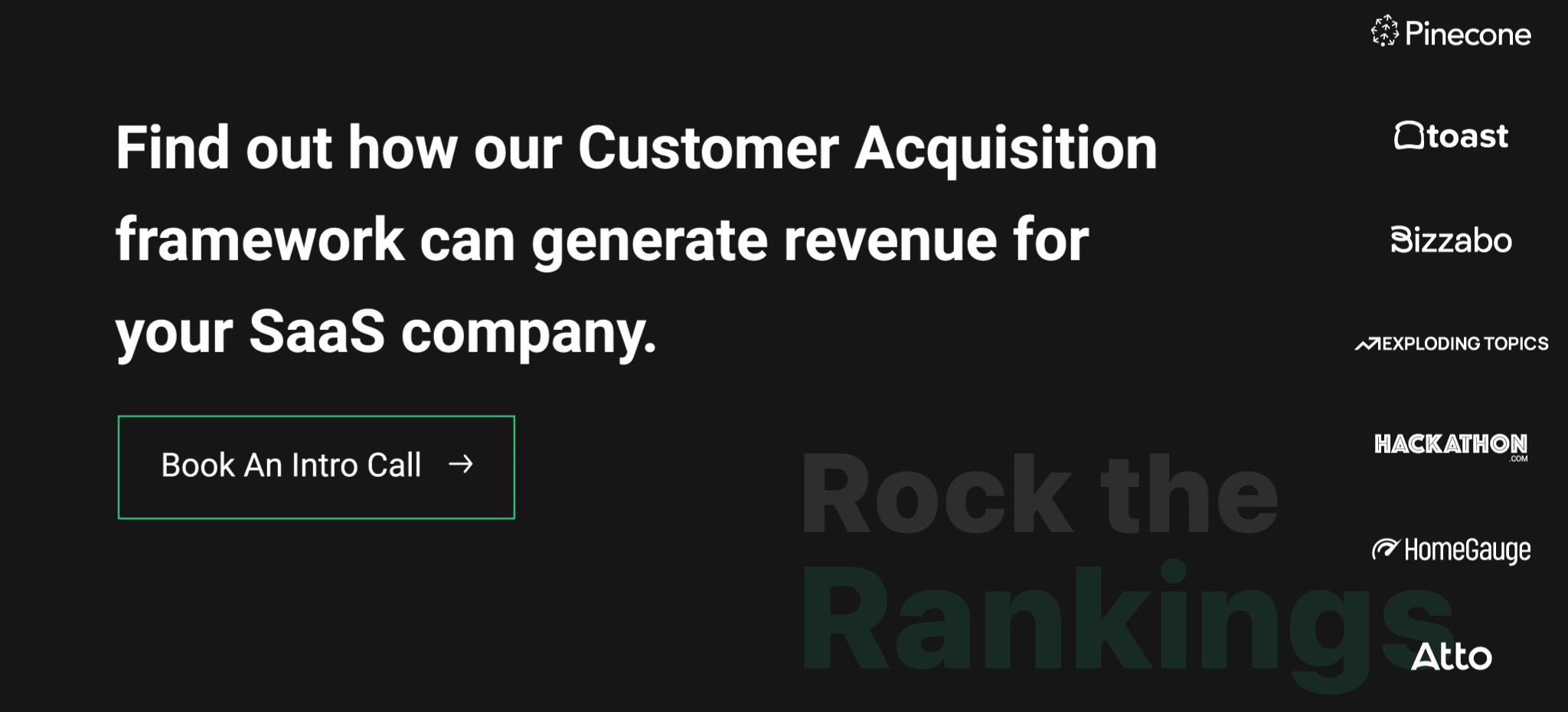
Founder of Rock The Rankings, an SEO partner that helps B2B SaaS brands crush their organic growth goals. An avid fan of tennis, and growing micro-SaaS businesses on the weekend. 2x SaaS Co-Founder – Currently working to build and scale Simple Testimonial.
Book a 1-on-1 intro call with our founder that includes a FREE custom marketing plan. Start growing faster, today.